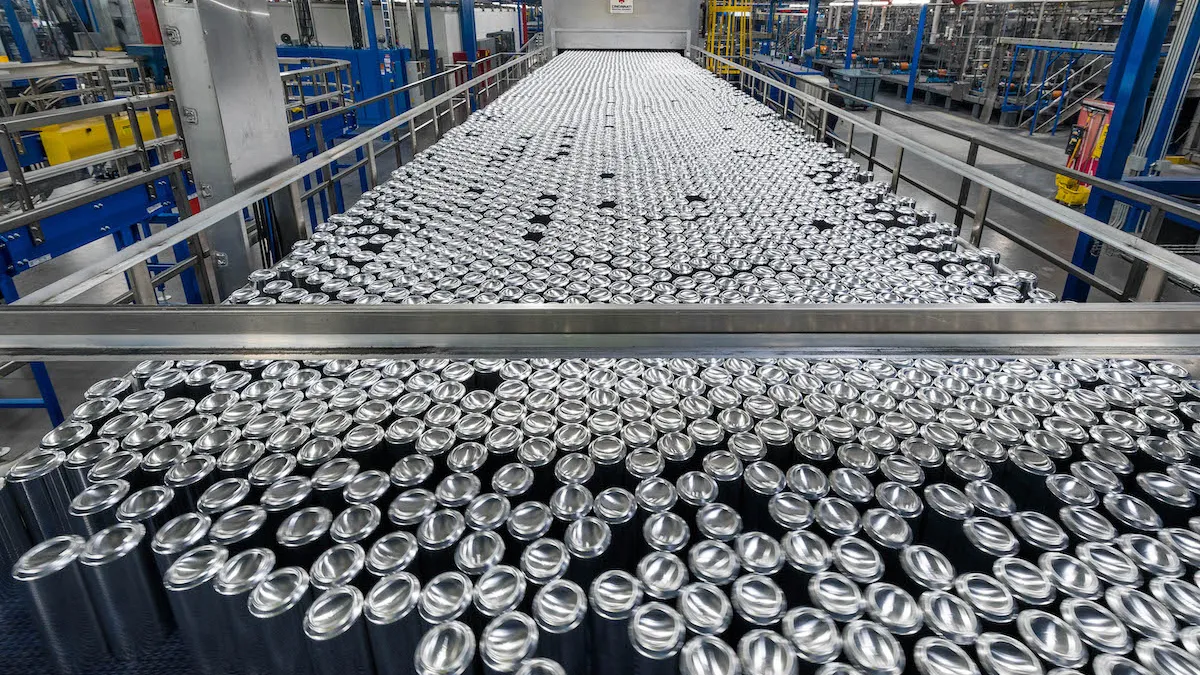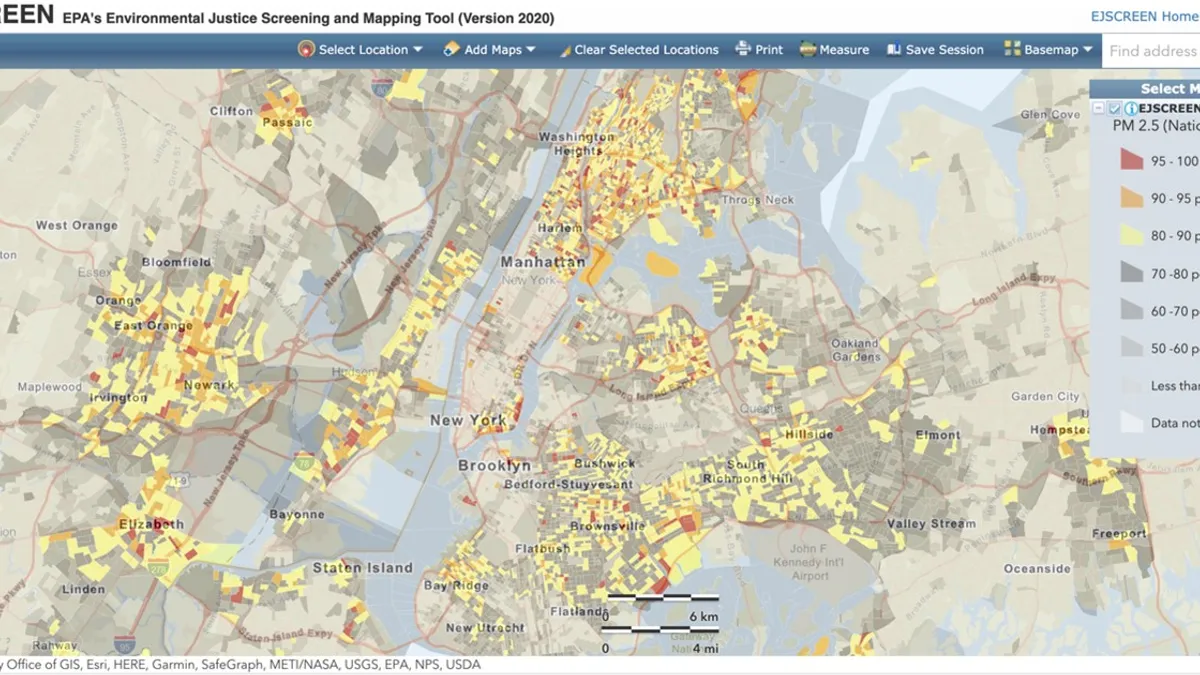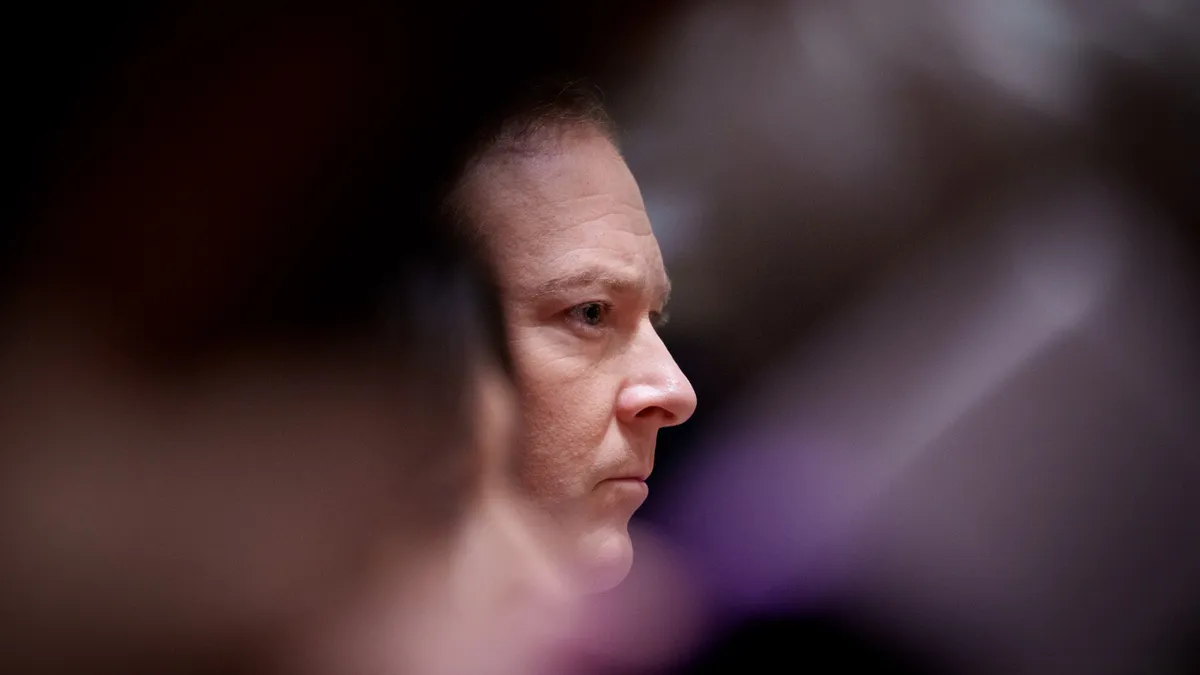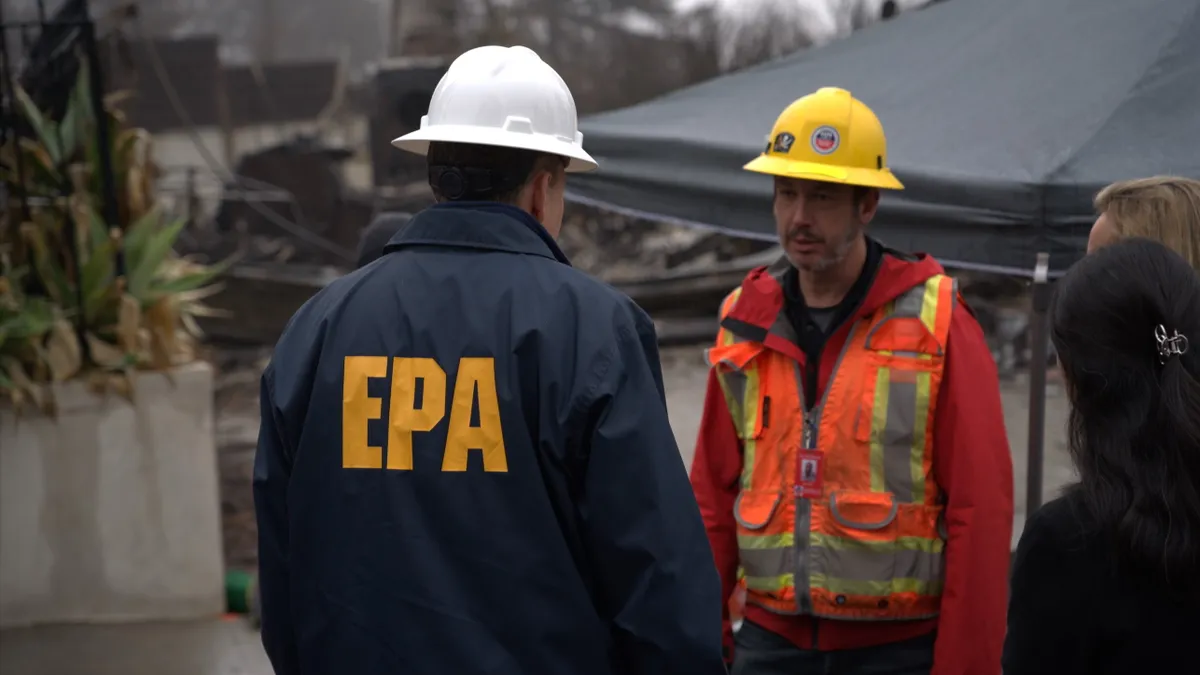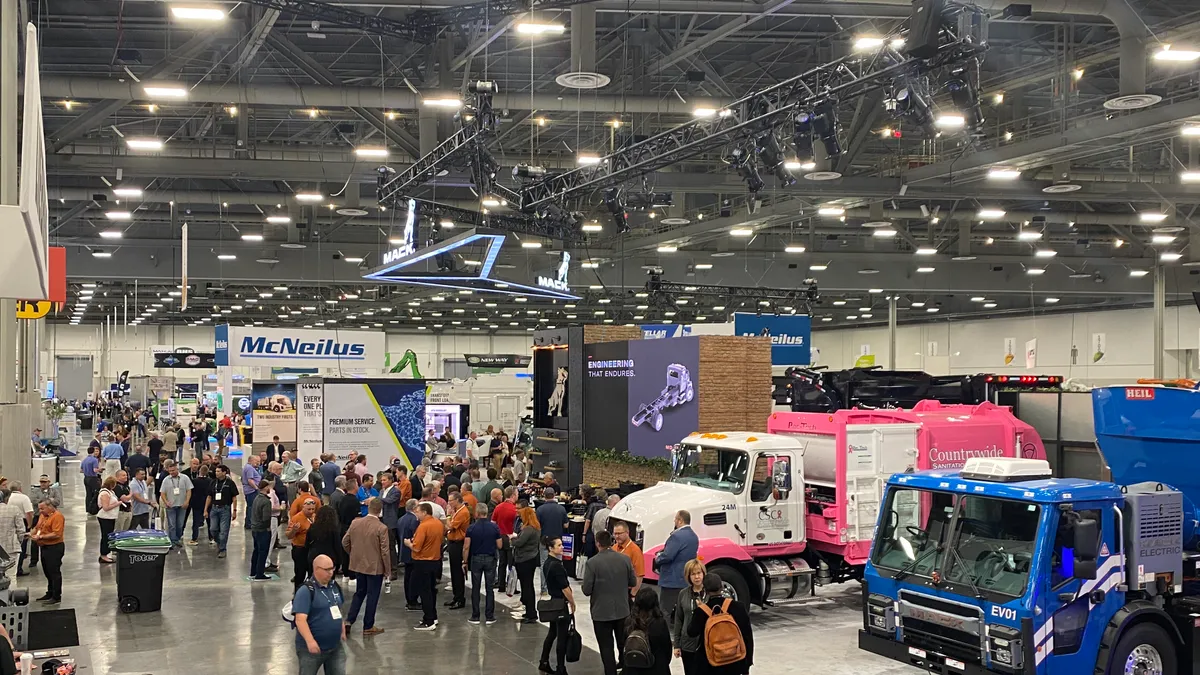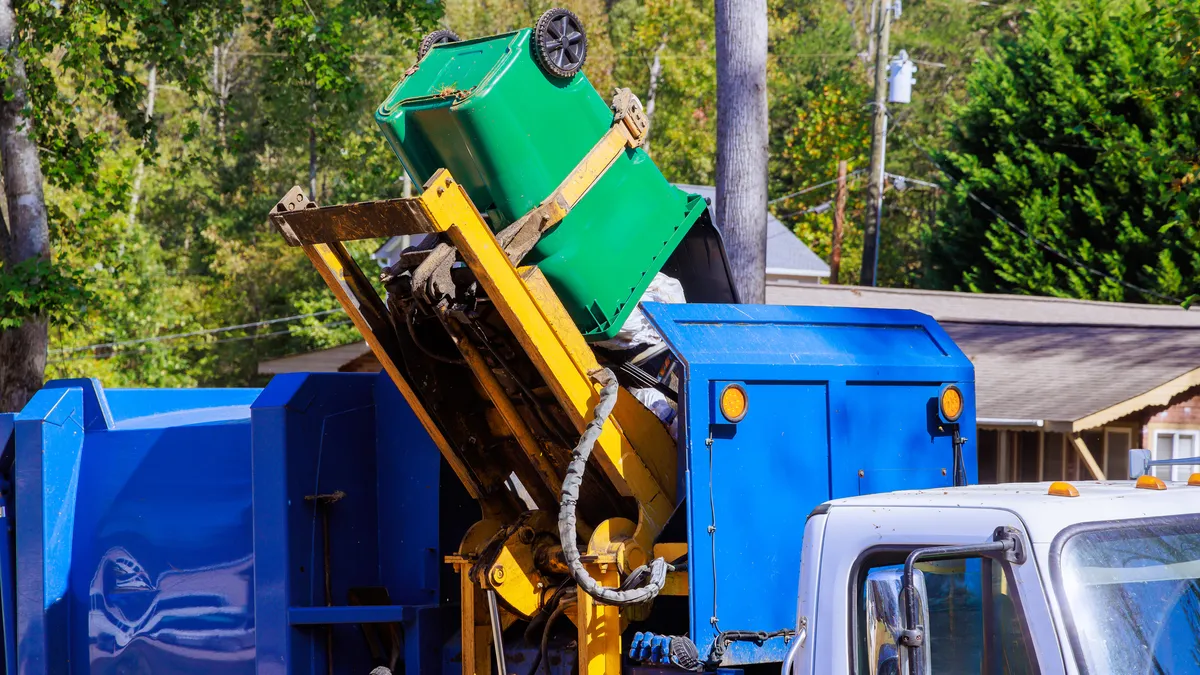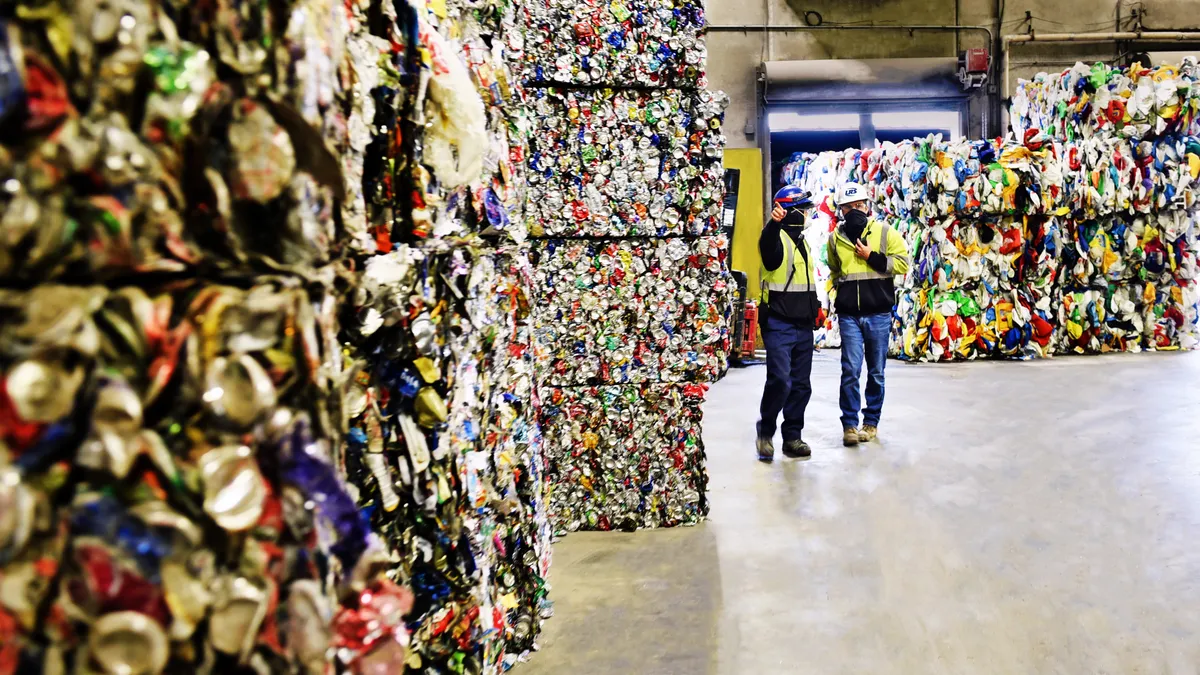Like many of its peers, aluminum packaging giant Ball has engaged in corporate sustainability reporting for years. But as it works to reduce total emissions, Ball wanted to increase the credibility of its goals by reporting in greater detail its plans to realize them.
That planning comes in the face of company growth and uncertainty about how overarching external influences like public sentiment or policymaking could speed or slow a circular economy.
The result is its recently released, forward-looking Climate Transition Plan, believed to be a first of its kind in the canmaking industry, according to Director of Global Sustainability Adam Shalapin. It’s backed by a quantitative-based model developed over the course of a year.
While decarbonizing its remelting and rolling processes is among the factors necessary to hit emissions reduction targets, “the biggest lever by far is going to be around circularity,” Shalapin said — meeting the recycling and recycled content goals.
The plan lays out three primary possible scenarios between now and 2030:
- Plan A: Significant shift toward circularity and low-carbon primary aluminum, supported by public enthusiasm for climate action
- Plan B: Not reaching 90% collection rates in business regions, potentially because ambitious extended producer responsibility policies and deposit return systems aren’t adopted fast enough
- Plan C: Primary aluminum decarbonizes slower than expected, potentially due to higher-than-expected costs
In a recent interview with Packaging Dive, Shalapin discussed how Ball aims to be resilient to any of those scenarios, and how the company intends to continue advocating for “well-designed recycling policy,” enable more recycled content and make adjustments to its own procurement practices and operations.
This interview has been edited for length and clarity.
What prompted the company to create its own Climate Transition Plan?
Many of our largest customers have science-based targets, have net-zero goals, and as a requirement of continuing to meet their needs as a supplier, we think it's important to not only set our own carbon reduction goals, but also to make sure that there is credibility to that goal. And we see the development and publication of this Climate Transition Plan as really a way of demonstrating that there is a technically feasible and economically viable scenario for us meeting these goals for supporting our customers and supporting their customers up the value chain.

The plan acknowledges a number of macro-unknowns and lays out different scenarios between now and 2030 that would result in varying degrees of progress on some of those sustainability goals. As a sustainability lead, and as an organization, how do you navigate how to most effectively move forward?
This is probably the most difficult part of building and maintaining progress on a net-zero pathway – predicting those potential scenarios and then developing action plans for each scenario. And one thing I'd like to clarify, based on your question, is that I don't think we look at it as much of ‘if progress isn't made, we won't meet our targets.’ I think we look at it more as ‘if this happens.’ For example, in Plan B, if there isn’t as much uptake of ambitious recycling policy, what are the other levers that we will pull and focus on to meet that target? So I think we look at it more as scenario planning: Where do we focus our time and investment as we go along that pathway if things start to change?
The hardest part is that, after all, these science-based targets are absolute goals, and the timeline and pace of growth of the aluminum packaging industry alone can be challenging to predict. It can depend on regulation around packaging, it could depend on consumer choice, around retail choice of what should be going on shelves in terms of substrate. There are a number of different factors that impact our own growth that make a pathway to an absolute goal challenging to predict.
A broad variety of pathways certainly exist, and we have an intention to refine our analysis on a regular basis. This will be a constant exercise. This Climate Transition Plan is not a one-and-done effort. It's more so a signal of what our capabilities and strategy are going forward in terms of assessing our progress and what we need to focus on in the future to achieve our goals.
One goal for 2030 is to achieve a 90% recycling rate of, and 85% recycled content in, aluminum beverage containers. Given current deficits in collection infrastructure and quality in many areas, what are some of the things needed to close that gap in such a short timeframe, particularly to enable can-to-can recycling?
The greatest challenge for us is going to be in North America, where recycling rates have really stagnated around 50%, and more than 40 billion cans a year are thrown away. That is approximately $1 billion, which is a lot of economic loss.
And so one of the key areas that we focus a lot of our time and energy on is well-designed recycling policies. Ball believes that a combination of extended producer responsibility with eco-modulated fees and well-designed industry-run deposit return systems is really the best proven method for achieving high recycling rates.
We've seen these policies be successful in Europe and Canada ... and also in the U.S., with Oregon often being touted as the model for a modern well-designed deposit return system. In the U.S., on average, we said in the report that states with DRS tend to have a three-times higher collection rate for beverage containers than non-DRS states. We know that these policies work; I think we just need to overcome the political hurdles that we face.
Fortunately, our policies are very aligned with our [aluminum suppliers]. Ensuring increased volume of a clean stream of aluminum is really critical for their business, for their investments, their own sustainability goals and delivering on the expectations of customers like Ball and our customers down the value chain.
While there is not complete alignment across the beverage packaging industry, in terms of which policies are best and which elements of those policies should be included or not, the industry is having lots of open dialogue. And there has been a lot of movement.
Are there any other possibilities for industry stakeholders across substrates to pull together in the sustainability space besides for EPR?
I think across substrates it's challenging to think about additional ways for the industry to come together. In the past, we have coalesced around working with different NGOs to increase access to recycling and increase education around recycling, to invest in infrastructure. And I think these are things that the industry will always align around and continue to do.
But unfortunately, the truth is that we haven't seen major movement in recycling rates based on what has been done to date. Certainly we've seen increased access or increased consumer education, but has it resulted in the pace of change that is needed to meet circularity and climate goals? It has not. So that is why we are very focused on well-designed recycling policy.
Overall, what would you say is the greatest risk to Ball making progress on these targets over the next few decades at the pace that the company would like to?
When we look at the importance of circularity to these goals, I think we've laid out what we see as the biggest risk in the scenarios that we have proposed.
We do see one of the biggest risks as a lack of uptake in recycling policy. And then I think in terms of other risks within the supply chain, that's reflected in plenty of our report, which is a slower decarbonization within the primary aluminum sector. Because of the interconnectedness of all these, if we don't see well-designed recycling policy that leads to higher recycling rates, a cleaner stream that leads to higher recycled content, that means that we'll need to rely on greater amounts of primary aluminum. And if there is a slower decarbonization rate within the primary aluminum sector, then you can start to see how those factors start to compound and those risks start to compound.
Interested in more packaging news? Sign up for Packaging Dive today.



